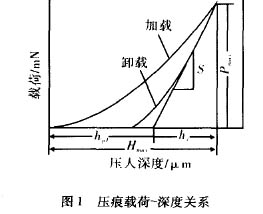[Abstract] The micro-indentation test method is an effective method for testing the strength of paper fibers and the bond strength between fibers. The load-displacement curve of the binding sites between fibers and fibers is measured. The analysis can calculate the modulus of elasticity and elastic contact stiffness at the fiber and bonding point. This test method lays the foundation for further study of the relationship between fiber performance and paper performance.
Keywords: paper fiber; micro-indentation indentation; elastic modulus; elastic contact stiffness
For performance testing of paper, such as tensile strength, fracture length, stretchability, printing surface strength, etc., due to the limitations of experimental techniques, traditional methods mostly measure the relevant performance parameters directly or indirectly from the macroscopic point of view. However, little work has been done to explore the issues affecting the nature of paper properties from a microscopic perspective. Since the birth of nanotechnology in the 1980s, after more than 20 years of development, nanotechnology has made tremendous progress. To some extent, test methods have promoted the rapid development of nanotechnology. The development of micro and nano-view testing technology has opened up a new way for people to study microscopic materials. The microindentation test method is a new type of test method developed with the development of nanotechnology, which measures the elastic modulus and elastic contact of the material under test by measuring the load-depth relationship curve of the microscopic region of the tested material. The stiffness and other issues are particularly applicable to the study of thin materials and microscopic properties of materials. This paper applies this test method to the study of paper. From the microscopic point of view, the relationship between micro-loading and micro-indentation depth is used to study the problems related to the strength of paper fibers and the bonding strength between fibers. To do some basic work on the relationship between the macroscopic properties of paper and microfibre, performance.
The relationship between fiber and fiber bond strength and paper strength The paper strength includes tensile strength, tensile strength, burst strength, and tear strength. These four strengths are closely related to the bond strength between the fiber monomers and fibers of the paper. . The effect of fiber on the strength of the paper is related to the degree of fiber bonding. For a well-integrated paper sheet, the fiber strength has a great influence on the relevant properties related to the fiber breakage, and the decrease in fiber strength leads to tensile strength, burst strength, and folding resistance. The apparent decline in the degree. The fiber strength of paper is related to the characteristics of the fiber itself. The cell wall is thin, and the fibers with large cell cavities have high paper strength, while the cell walls have a small thickness and a small cell fiber has a low paper strength. This is due to the fact that the thin cell walls and the large cavities have good flexibility, making the fibers easy to bind together, and the binding force is large; while the cell walls are thick, the fibers with small cavities are relatively stiff, and the fiber binding force is poor. Therefore, when the fiber binding is weak, the binding index between the fibers is the main determinant, and the tensile strength is mainly controlled by the fiber binding; if the fiber binding is large, the binding index has less effect. At this point, the effect of fiber strength appears even more important.
In order to quantify how the fiber strength and fiber binding area affect the strength of the paper, and to what extent the paper strength is affected, an effective method is needed to further explore this issue.
2 Micro-indentation test method
The micro-indentation indentation test method is a very effective method for studying the microscopic properties of materials. It studies the relevant properties of the material through a curve that records the relationship between the depth of loading and the depth of unloading at the BIBI. Among them, the unloading curve It is very important to study the elasticity and plasticity of materials.
Figure 1 shows the load-depth map of a material with elasto-plastic deformation.

(to be continued)